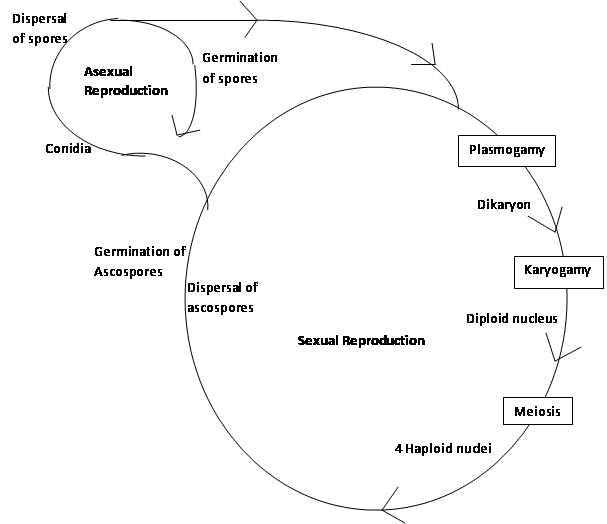Reproduction
Fusarium circinatum reproduces by both sexual and asexual reproduction. The pathogen is dispersed by an abundance of airborne inoculum. It is also helped along by many insects. The fungus uses the conidia to reproduce during asexual reproduction. To learn more about the reproduction of Fusarium circinatum check out this website that is shows many of the different DNA sequences of this fungus.
The life cycle of this organism is very
similar to that of other Ascomycetes. The fungus becomes a
dikaryon through the process known as plasmogamy. It then
undergoes karyogamy to form a diploid nucleus. After karyogamy,
the organism goes through meiosis which produces four haploid
nuclei. Eventually, the ascospores are dispersed and germinated.
This is all part of the sexual reproduction phase. During the
asexual reproduction phase, dispersal and germination of haploid
spores take place in the conidia. To look at another example of
reproduction in an ascomycete, visit this website on a
pathogenic fungus.

This is a generalized form of the life cycle of Fusarium circinatum.